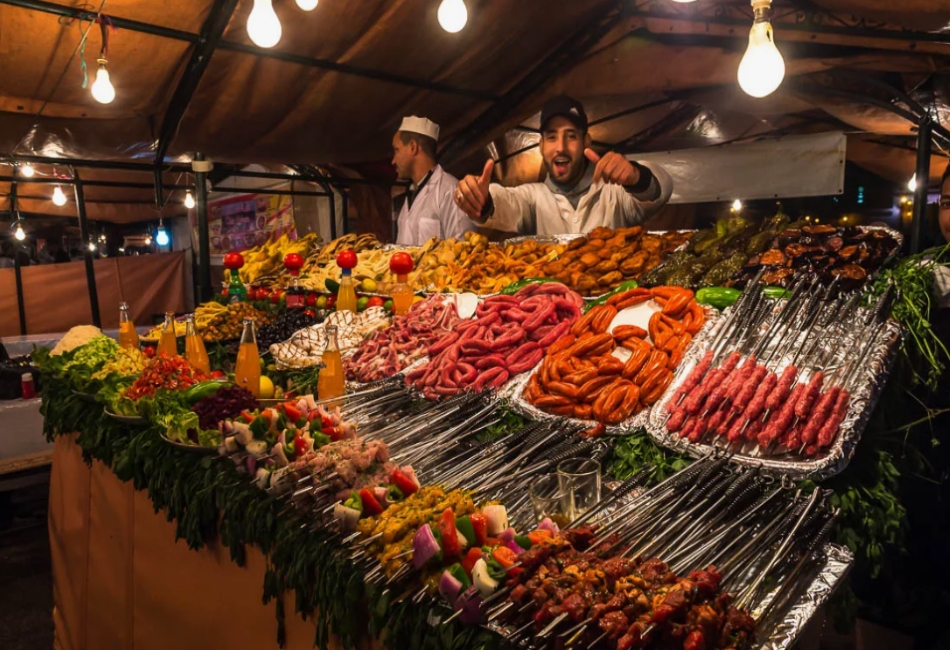10 Must-Try Moroccan Dishes on Your Next Holiday
The best part of any trip is the food, and if the country is Morocco, you need to keep yourself ready for a food adventure. Yes, we term the cuisine experience in Morocco as adventure because the country has a rich and colorful food culture that stays with you long after you have returned home. Moroccan food is a journey through centuries of tradition and regional diversity. Every region has its own special recipes passed down through generations. While most visitors are familiar with the classics like couscous, tagine, and sweet mint tea, there’s an entire world of lesser-known dishes that you can explore during your Morocco Holidays. Hence, they are not just the meals but stories, traditions, and celebrations of Morocco served on the plate. Let us take a bite into Morocco’s best-kept culinary secrets that most travellers don’t know about.
A Sneak-Peak into Morocco’s Food Scene
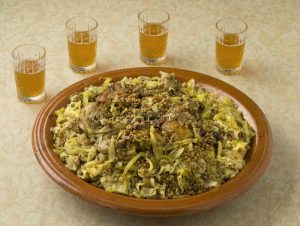
Rfissa
A chicken and lentil dish, Rfissa is Morocco’s comfort food and is most loved by the people, especially in the north. It is made on a low flame by adding chicken, lentils, and fenugreek seeds, which then give it a rich and saucy texture. A mixture of warm spices like saffron, ginger, and ras el hanout is added to the pot to enhance the taste and aroma. In addition to these spices, what makes Rfissa truly special is the way it is served to the guests. It is presented to the visitors on a bed of shredded msemen or trid (Moroccan flatbreads). The bread soaks up all the juices, making each bite soft, spicy, and full of flavour. It is famously cooked at the traditional celebrations. Moreover, Rfissa has natural healing properties, so it is also often served to new mothers to hasten their recovery and heal their wounds.
Bissara
Bissara is a thick Moroccan winter favourite soup that is made with dried fava beans, garlic, olive oil, and cumin seeds. These spices give it a creamy texture that makes it look smooth and filling. The best way to enjoy it is with fresh bread, a drizzle of olive oil on top, and a sprinkle of paprika powder on it. If you stay in cooler regions like the Rif Mountains during your Moroccan holidays, you will see this soup served early in the morning on street stalls. So, get up early and get your bowl of it, and enjoy it in the morning mist. Hence, Bissara proves that simple ingredients have enough power to treat your palate with unforgettable taste.
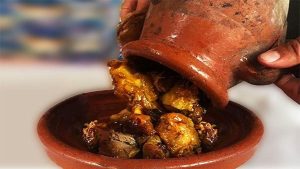
Tangia
If you are a meat lover, Morocco has a very special dish laid out on its menu card. Traditionally cooked by the men, Tangia is a deeply rooted dish that is the speciality of Marrakech city. Chunks of beef or lamb are marinated with lemon, garlic, and spices for several hours and then put in a clay pot. The pot is then sealed tightly and slow-cooked over the hot ashes. After several hours of slow cooking, the meat becomes fall-apart tender and full of smoky flavour. This dish is cooked every Friday, and its demand increases when there is a group gathering. People prefer to serve their group of friends or families with this delectable Tangia. When you go to Morocco, do not come back until your taste buds get a flavour of it.
Seffa Medfouna
Seffa Medfouna is a kind of dish you might not expect people to like so much. It is a surprising mixture of sweet and sour. Sweetened couscous is layered with tender chicken or lamb and topped with powdered sugar, cinnamon, and sometimes almonds. It might look unusual, but to your surprise, it creates a perfect balance between savoury and sweet. It is the most popular wedding and events dish. Seffa Medfouna is a treat for the stomach, but the way it is served makes it a treat for the eyes, too. It is often served shaped into a mountain of fluffy couscous that makes it look appealing at first sight.
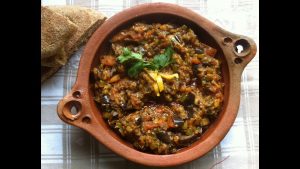
Zaalouk
Zaalouk is usually a side dish or appetiser that is served warm or cold. It is usually served as a salad and made with roasted eggplant, tomatoes, and garlic, in which olive oil, cumin, and paprika are added to enhance the taste. It is made by mashing the eggplant into a soft and dip-like texture, then pairing it beautifully with crusty Moroccan bread. Bold and smoky flavours fume out of it, which makes everyone curious to try it. Although Zaalouk is not a main dish, it decorates family dinner tables.
Loubia
A take on Morocco’s baked beans, Loubia is far more flavourful than the canned variety of beans you have enjoyed to date. The way it is made is special. Garlic, paprika, cumin, and olive oil are added to the tomato puree to make its sauce. White beans are added to this paste and cooked until they are tender. You can enjoy it in three ways: either as it is, with bread, or with grilled meat. Loubia is a comfort food of many Moroccans and is cooked in many homes. The dish offers a hearty and spicy bite, which is enough to warm you inside out and treat your taste buds deliciously.
Maakouda
Now, we will talk about Morocco’s famous street food, which is Maakouda and is served in cities like Casablanca and Fes. It is like potato fritters. These are made with mashed potatoes, garlic, parsley, and spices, then shaped into patties and fried until crispy. Most of the time, these are served as a snack with sandwiches or alongside salads. Maakouda is a simple, affordable, and incredibly satisfying snack that looks crispy outside but is super soft to bite. Hence, it is a perfect food to have with your evening tea or to add to the menu of high tea at events.
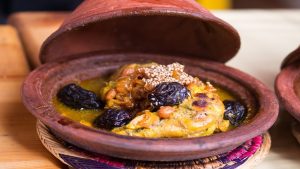
Tanjia Dial Hout
Do not confuse it with Tangia we have discussed above. Though most people confuse Hout with Tangia (meat version), Tanjia Dial Hout is a fish or seafood stew cooked with preserved lemon, garlic, saffron, and fresh herbs. Coastal towns like Essaouira and Safi have their own seafood versions, so they cook it in a traditional tangia pot just like the meat. However, the result is different. The seafood tanjia looks fragrant and juicy, capturing the taste of Morocco’s Atlantic coast. If you are a seafood lover, you must get a Tanjia Dial Hout bowl to experience a unique smoked fish.
Hout Quari
Morocco is famous for its sardines, and one of the boldest ways to enjoy them is by tasting Hout Quari or Hout Mchermel. These are marinated with chermoula, which is a mix of garlic, parsley, coriander, paprika, cumin, and lemon juice. After letting it sit for a few hours, it is then fried until golden and crispy. It tastes spicy, tangy, and full of flavour. Street vendors usually sell this dish. It is also best enjoyed with salads or as sandwich stuffing. Hence, it is a perfect example of how Morocco creates artistic dishes with everyday ingredients.
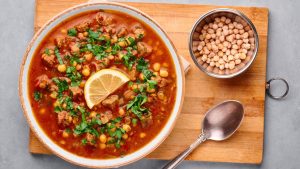
Harira
During Ramadan, Moroccans break their fast with Harira. It is a kind of soup that is thick and tasty. It is specially made during this holy month with meat, so its texture is kept thick. However, it has another everyday version called Harira Beldi, which is lighter and made without meat. Lentils, chickpeas, tomatoes, and vermicelli noodles are added to make this soup. With a mix of herbs and spices like celery, cilantro, turmeric, and ginger, it’s both soothing and nourishing. Harira Beldi is enjoyed by the families year-round, especially as a lunch or dinner starter.
Final Thoughts
Moroccan cuisine is one of its kind. The number of dishes listed in this blog tells the story of Morocco’s regions, traditions, and love for bold, comforting food. When you plan your Morocco holidays, do not miss out on trying these dishes that offer a deeper taste of Moroccan life. Contact Virikson Holidays and get amazing Morocco holiday deals. The city is sure to delight your taste buds with its lesser-known but unforgettable meals.

